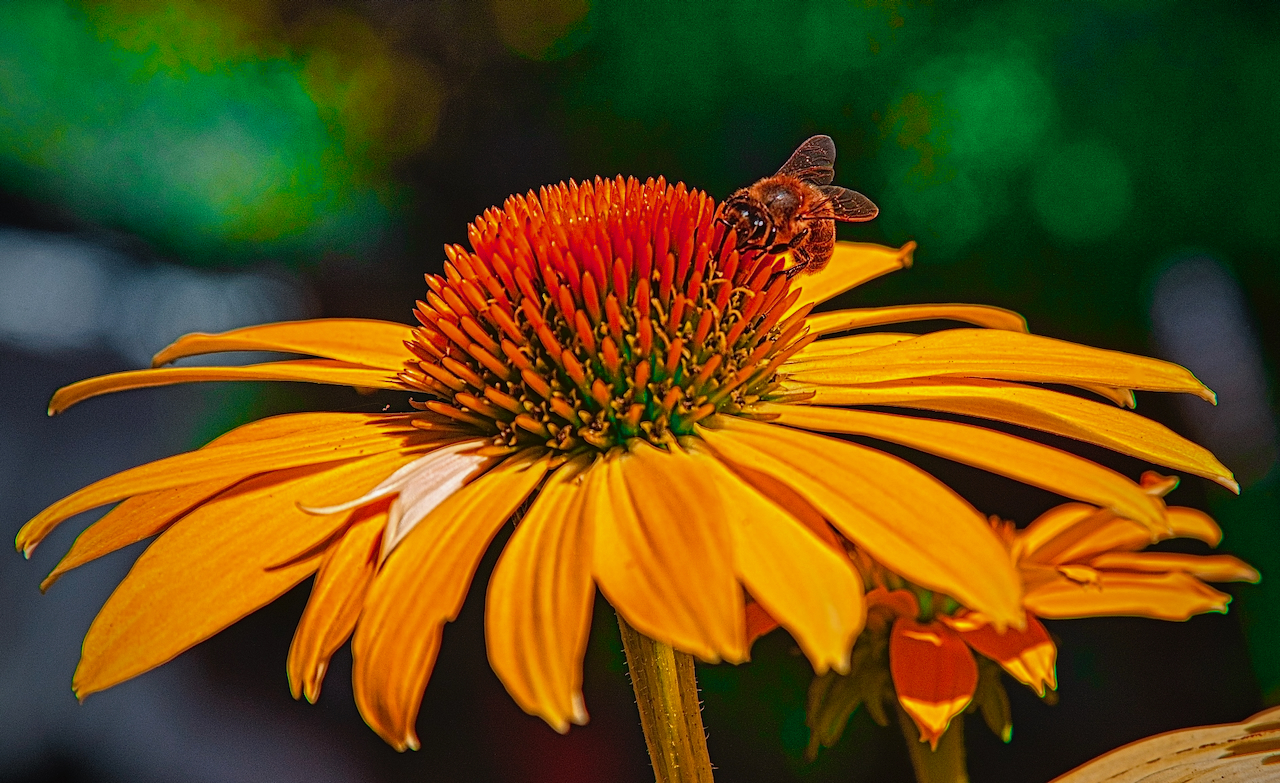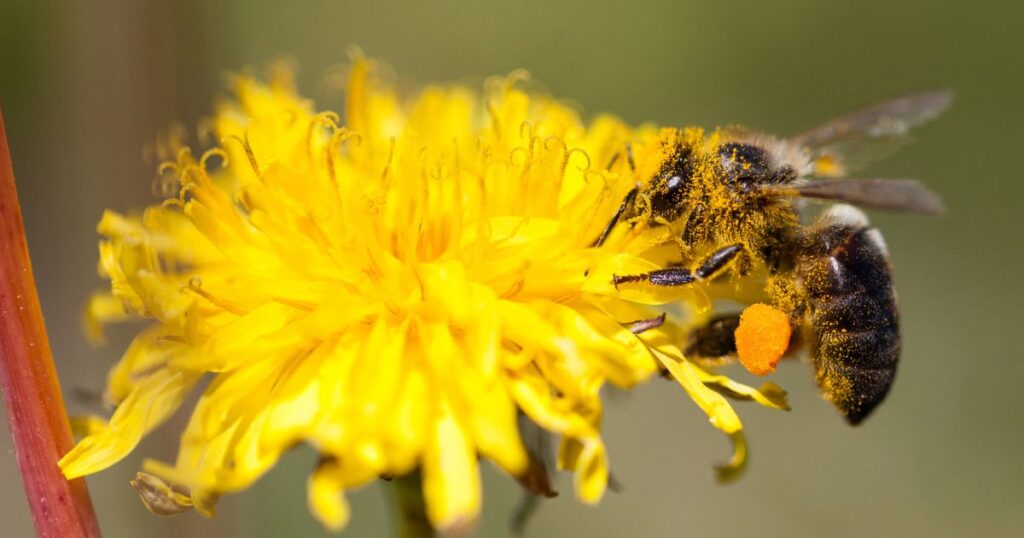Understanding Pollinators

Imagine a world without vibrant flowers, juicy fruits, or buzzing bees. This scenario, though seemingly idyllic, would be a stark reality without the vital role of pollinators. Pollinators, the unsung heroes of our ecosystem, are crucial for the survival and reproduction of countless plant species, including those that provide us with food, medicine, and raw materials.
Types of Pollinators
Pollinators are diverse, encompassing a wide range of insects, birds, and even mammals. While many creatures contribute to pollination, some stand out as particularly important for gardens.
- Bees: These industrious insects are perhaps the most well-known pollinators, with over 20,000 species worldwide. Honeybees, bumblebees, and solitary bees are commonly found in gardens, each playing a vital role in plant reproduction.
- Butterflies and Moths: These delicate winged creatures are drawn to brightly colored flowers, often feeding on nectar and transferring pollen between plants. Butterflies, with their long proboscises, are particularly adept at reaching nectar deep within flowers.
- Hoverflies: These fly species, often mistaken for bees due to their similar appearance, are important pollinators, especially for plants with flat, open flowers.
- Birds: Hummingbirds, with their long beaks and hovering flight, are renowned for their pollination of tubular flowers. Other bird species, such as finches and sparrows, also contribute to pollination, particularly in areas with abundant wildflowers.
Plants that Attract Pollinators
Creating a pollinator-friendly garden is a rewarding endeavor. By choosing plants that attract specific pollinators, you can create a vibrant ecosystem teeming with life.
- Bees: Flowers with vibrant colors, strong scents, and open shapes, such as lavender, sunflowers, and clover, are particularly attractive to bees.
- Butterflies: Butterfly gardens often feature nectar-rich flowers with bright colors, such as zinnias, butterfly weed, and coneflowers.
- Hoverflies: Plants with flat, open flowers, such as yarrow, Queen Anne's Lace, and cosmos, are known to attract hoverflies.
- Birds: Red, orange, and yellow flowers, such as cardinal flowers, bee balm, and trumpet vine, are particularly attractive to hummingbirds.
Providing Food and Shelter

A thriving pollinator population needs a reliable source of food and safe havens to raise their young. By creating a pollinator-friendly garden, you can provide these essential elements and contribute to the well-being of these vital creatures.
Providing Food: Flowers for Nectar and Pollen, Tips for attracting pollinators to your garden
Pollinators rely on nectar and pollen as their primary food sources. Nectar, a sugary liquid, provides energy, while pollen, rich in protein and fats, is essential for growth and development. To attract pollinators, you should plant a diverse array of flowers that bloom throughout the growing season, ensuring a continuous supply of food.
Here are some examples of flowers that attract specific pollinators:
- Butterflies: Butterflies are attracted to brightly colored flowers with flat landing pads, such as zinnias, cosmos, and butterfly weed.
- Bees: Bees are attracted to flowers with a strong fragrance and a variety of shapes and colors, including sunflowers, lavender, and clover.
- Hummingbirds: Hummingbirds are drawn to tubular flowers with bright red or orange hues, such as bee balm, cardinal flower, and trumpet vine.
Providing Shelter: Plants for Nesting and Overwintering
Pollinators require safe and secure places to nest, raise their young, and overwinter. By incorporating certain plants and creating undisturbed areas in your garden, you can provide them with the necessary shelter.
- Native Plants: Native plants often provide the best shelter for pollinators, as they have evolved alongside them and provide the specific habitat they need. For example, native grasses, shrubs, and trees can offer nesting sites for bees and other pollinators.
- Dead Trees and Snags: Leaving dead trees and snags standing in your garden can provide excellent nesting and overwintering sites for wood-boring bees, beetles, and other insects.
- Leaf Litter and Brush Piles: Allowing leaves and branches to accumulate in certain areas of your garden creates natural habitat for ground-nesting bees, butterflies, and other pollinators.
Leaving Areas Undisturbed
Leaving some areas of your garden undisturbed, such as a wildflower patch or a patch of native grasses, provides a valuable habitat for pollinators. This natural area can offer nesting sites, food sources, and protection from predators. It also helps maintain biodiversity and supports a healthy ecosystem.
Creating a Water Source: Tips For Attracting Pollinators To Your Garden

Pollinators, like all living creatures, need water to survive. A reliable water source in your garden can be a crucial factor in attracting and supporting a thriving pollinator population.
Designing a Safe and Accessible Water Source
Providing water for pollinators isn't just about filling a bowl; it's about creating a safe and inviting space for them to drink. Here are some design considerations:
- Shallow Water: Pollinators, especially bees, can drown in deep water. A shallow dish, no more than an inch or two deep, is ideal.
- Stable Base: Choose a stable container or platform to prevent tipping or accidental spills.
- Smooth Edges: Avoid containers with rough or jagged edges that could injure delicate pollinators.
- Easy Access: Place the water source in a sunny spot, but ensure it's easily accessible for pollinators without being obstructed by plants or other obstacles.
Creating a Pollinator Garden Guide
Creating a pollinator-friendly garden is an enjoyable and rewarding experience, offering a chance to contribute to the well-being of these vital creatures. To help you design your own pollinator haven, we've put together a comprehensive guide filled with helpful resources.
A Guide to Choosing Pollinator-Attracting Plants
Selecting the right plants is crucial for attracting diverse pollinators. Here's a table showcasing some of the best plants for attracting various pollinators:
| Pollinator | Plant Type | Plant Examples |
|---|---|---|
| Bees | | |
| Butterflies | | |
| Hummingbirds | | |
| Moths | | |
For example, bees are attracted to plants with bright colors, especially yellow and blue, and strong fragrances. They prefer flowers with open, flat shapes, providing easy access to nectar and pollen. Some excellent bee-attracting plants include lavender, sunflowers, and clover.
Visual Guide to Pollinator Habitats
This visual guide helps you understand the different types of pollinators and their preferred habitats:
Bees: Bees are often seen buzzing around flowers, collecting nectar and pollen. They prefer sunny, open areas with a variety of flowers.
Butterflies: Butterflies are attracted to brightly colored flowers, particularly those with red, orange, and yellow hues. They often frequent gardens with nectar-rich flowers and areas with sunshine.
Hummingbirds: These colorful birds are drawn to flowers with long, tubular shapes, providing easy access to nectar. They prefer gardens with bright red, pink, and orange flowers.
Moths: Moths are nocturnal pollinators, often visiting flowers with strong scents. They prefer gardens with light-colored flowers and areas with shelter from the wind.
Checklist for Creating a Pollinator-Friendly Garden
Follow this checklist to create a haven for pollinators:
- Plant a variety of flowers: Offer a diverse range of nectar and pollen sources throughout the growing season.
- Choose native plants: Native plants are adapted to local conditions and provide valuable resources for pollinators.
- Provide a water source: A shallow dish of water with pebbles for perching will attract pollinators, especially during hot weather.
- Avoid pesticides: Pesticides can harm pollinators, so opt for organic pest control methods.
- Leave some areas undisturbed: Allow some areas of your garden to grow wild, providing habitat for pollinators.
- Create a pollinator-friendly landscape: Plant trees and shrubs to provide shelter and nesting sites for pollinators.
- Educate yourself: Learn about the different types of pollinators in your area and their needs.
- Spread the word: Encourage your friends and neighbors to create pollinator-friendly gardens.
FAQ Explained
Tips for attracting pollinators to your garden - What are the most common pollinators in my garden?
The most common pollinators in gardens include bees, butterflies, moths, hummingbirds, and even some bats!
Can I attract specific pollinators?
Absolutely! Certain plants attract specific pollinators. For example, lavender attracts bees and butterflies, while red salvia attracts hummingbirds.
What are the best ways to provide water for pollinators?
Shallow dishes, birdbaths, and even dripping hoses can be excellent water sources. Ensure they're clean and accessible for pollinators.
How often should I water my garden for pollinators?
Consistency is key! Keep the water source fresh and replenished, especially during dry periods.
Can I use pesticides in my pollinator garden?
Pesticides can be harmful to pollinators. Opt for organic methods like companion planting and hand-picking pests.
